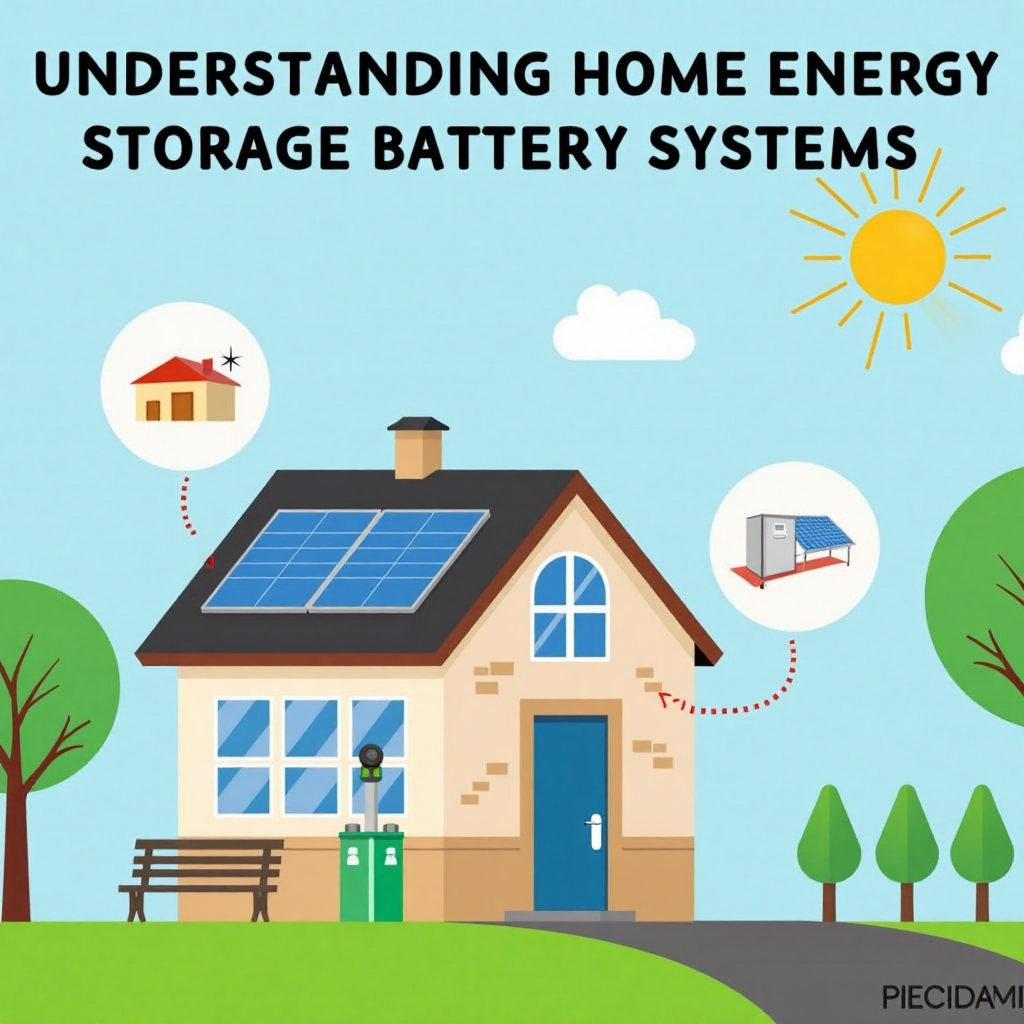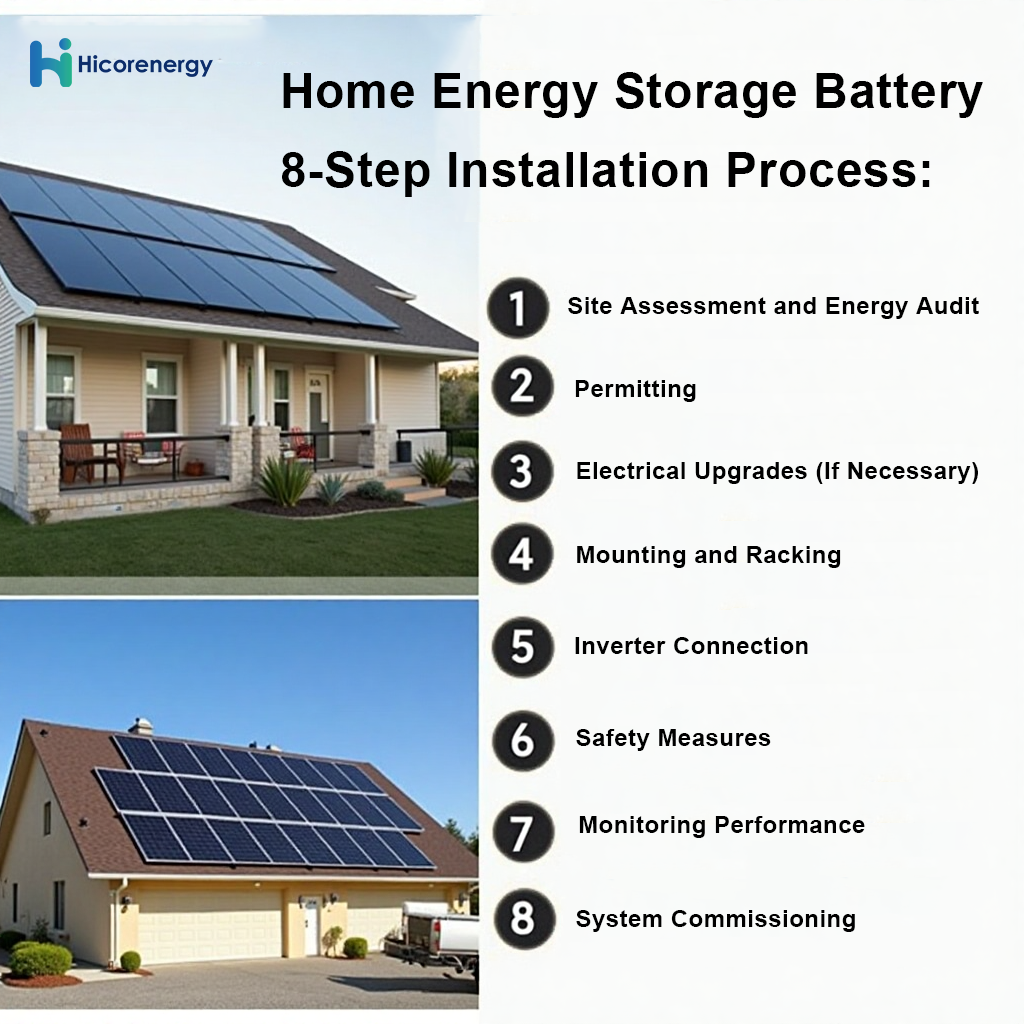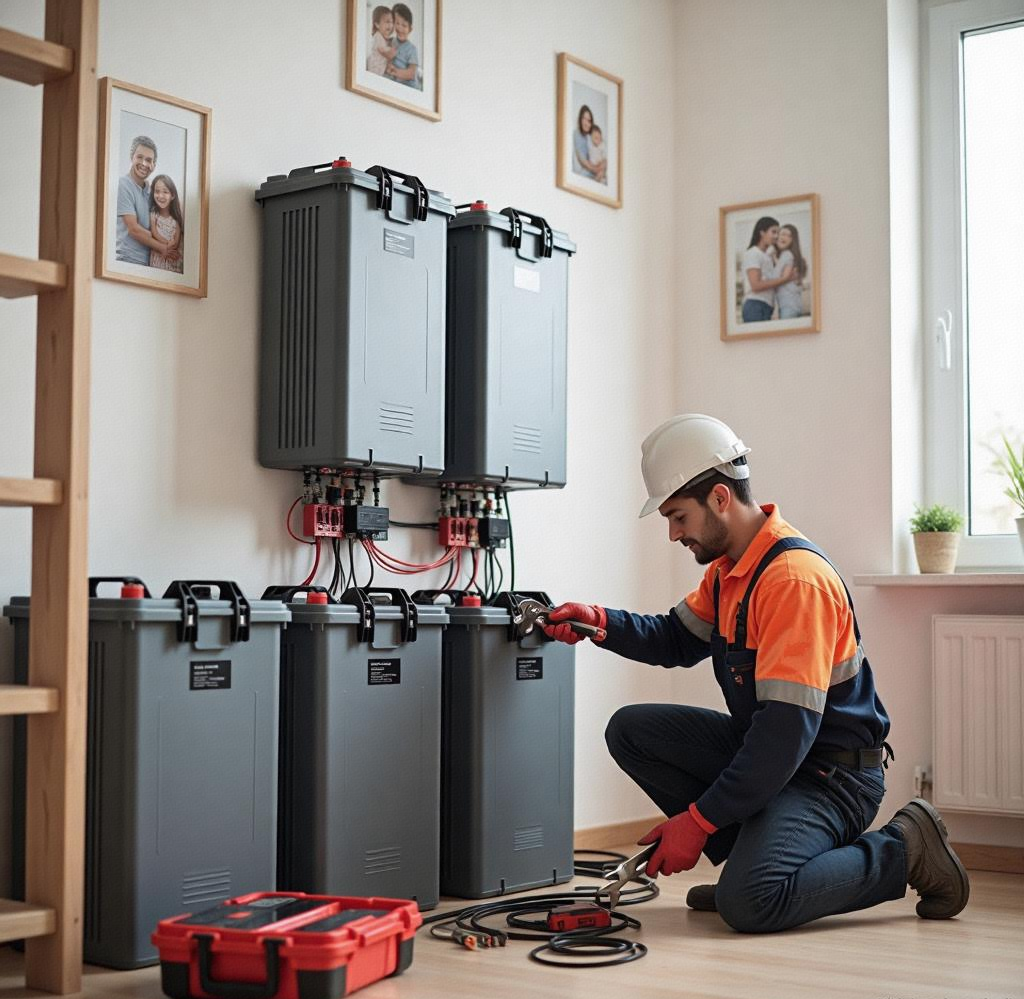Understanding Home Energy Storage Battery Systems
Home energy storage battery systems store energy from solar panels or the grid to power homes during outages or peak hours. They improve energy independence, reduce electricity bills, and support a greener lifestyle.
Table of Contents
What Are the Benefits of Home Energy Storage Battery?

Home energy storage batteries offer numerous benefits for both residential and commercial users. For homeowners, they provide a reliable backup during power outages and help manage electricity usage during peak periods when grid energy is expensive. They also reduce reliance on unstable power infrastructures, especially in regions prone to blackouts.
For environmentally conscious users, battery storage solutions support the use of renewable energy like solar, thus contributing to a reduction in carbon emissions. Systems such as Hicorenergy’s I-BOX 48100R or Si LV1 utilize advanced prismatic LiFePO4 cells and deliver over 6000 cycles, making them long-lasting and cost-effective.
Home energy storage also enhances flexibility. With features like remote monitoring, modular expansion, and compatibility with various inverters, users can optimize systems according to changing energy demands. The system also promotes energy efficiency through >95% round-trip efficiency, ensuring that most of the stored energy is effectively utilized.
What Are the Home Energy Storage Battery Installation Options?
Depending on home layout and usage patterns, installation can be wall-mounted, floor-standing, or server rack-mounted. Keep reading to explore the entire installation process step-by-step.
Steps in the Home Energy Storage Battery Installation Process

1. Site Assessment and Energy Audit
Before installing any home energy storage battery system, a thorough site assessment is vital. Professionals evaluate the homeowner’s energy needs, current electricity usage patterns, and physical installation constraints. The audit typically includes an analysis of roof space (if solar is integrated), sunlight availability, electrical infrastructure, and household energy consumption history.
At this stage, determining whether the property is suitable for an off-grid, grid-tied, or hybrid system is crucial. Engineers may also analyze the compatibility of existing inverters and other system components with selected batteries like Hicorenergy’s I-BOX 48100R or C5°. By assessing the household’s backup power needs, the installer can recommend a system size—ranging from a single battery unit to modular setups expandable up to 491.52kWh.
2. Permitting
Installation must comply with local regulations, and this involves obtaining various permits. The permitting process includes applying to local electrical authorities, utility companies, or homeowners associations. Documentation may need to include product datasheets, safety certifications, wiring diagrams, and manufacturer credentials.
Using a system like the Si LV1, which has UL9540A testing and integrated safety features like individual module fuses and breakers, can accelerate approval. Having professional documentation and compliance certificates from manufacturers like Hicorenergy ensures smooth interactions with the authorities.
3. Electrical Upgrades (If Necessary)
Some homes may require electrical system upgrades before installation. This might include replacing outdated circuit breakers, installing additional grounding systems, or enhancing the home’s main panel to support the load from the battery.
In many cases, installers will recommend upgrading the inverter as well. Products from Hicorenergy are designed to be compatible with most inverter brands, which simplifies the process. During this step, safety assessments are also conducted to make sure the installation will not overload the system or violate building codes.
4. Mounting and Racking
Mounting is a physical installation step. Homeowners can choose wall-mounted, floor-standing, or server-rack configurations depending on the product and space availability. Hicorenergy’s I-BOX 48100R is compact and designed for easy installation, offering both horizontal and vertical orientations.
For homes with limited space, solutions like the Si LV1, which supports plug-and-play stacking, reduce installation time to as little as 15 minutes. The mounting equipment (brackets or enclosures) must meet weight-bearing standards and ensure proper ventilation.
5. Inverter Connection
Connecting the battery to an inverter is essential for converting stored DC power to usable AC electricity. Most Hicorenergy batteries are engineered for seamless compatibility with leading inverter brands. The inverter is connected to the battery bank, and together they link to the home’s main electrical panel.
The wiring must comply with electrical codes and be capable of handling peak loads. Proper synchronization between the inverter and the battery’s Battery Management System (BMS) ensures efficient energy flow and long-term system stability.
6. Safety Measures
Safety is paramount in energy storage systems. Installers implement multiple layers of protection. This includes fuses, circuit breakers, and isolation switches, ensuring that systems can be shut down safely in case of malfunction.
Hicorenergy batteries like the C5° and Si LV1 are equipped with software and hardware protections including overcurrent, overtemperature, and short circuit prevention. Some models feature built-in heaters to ensure reliable performance in low temperatures. Installers also check ventilation and grounding systems as part of the safety protocol.
7. Monitoring Performance
After the system is installed and activated, real-time performance monitoring is crucial. Hicorenergy batteries support Web/App-based monitoring with data visualization and alarm notifications. This allows users to track system efficiency, battery health, and detect any issues early.
Remote upgrading capabilities reduce after-sales issues by allowing software updates and diagnostics to be performed online. Monitoring tools are especially important for installations in remote or unattended locations.
8. System Commissioning
Finally, the entire system undergoes commissioning. This includes running performance tests, verifying voltage levels, checking response during simulated outages, and training the homeowner on proper usage and safety procedures.
Once verified, the system is officially connected to the home grid, solar panels (if applicable), and the monitoring platform. Documentation is finalized, and the user can now enjoy the benefits of their home energy storage battery system.
How Long Does It Take To Install the Home Energy Storage Battery?
The total installation time varies depending on the complexity of the system and the home’s readiness. For straightforward installations using plug-and-play systems like the Si LV1, the process can take as little as a few hours. However, if electrical upgrades or permitting delays occur, installation may take 1–2 weeks.
Initial site audits and permit approvals may consume a few days to a couple of weeks. Mounting, wiring, inverter connection, and system testing typically require 1–2 working days. Factors such as local labor availability, product shipping times, and inspector scheduling also affect timelines. Having local stock and services, as offered by Hicorenergy, helps significantly reduce installation duration.
What Are the Costs and Financial Considerations?
The cost of installing a home energy storage battery system includes several components: battery unit(s), inverter, mounting hardware, labor, permits, and sometimes an energy management system. For an entry-level residential setup with one battery (around 5kWh), costs may start from $3,000–$5,000, while larger or modular systems (e.g., up to 30kWh) can exceed $15,000.
Hicorenergy offers scalable solutions to help balance budget with power requirements. Long-lasting batteries with ≥6000 cycles and over 10 years of warranty reduce long-term replacement costs. Systems like the C5° are equipped with efficient charge/discharge rates and remote features that reduce ongoing maintenance.
Additional savings may be obtained through government incentives, solar integration, or time-of-use energy optimization. Financing options and subsidies also vary by region, making it important to consult local installers or suppliers familiar with regional policies.

How To Choose A Energy Storage Battery System For Your Home?
Selecting the right home energy storage battery requires evaluating several criteria:
Capacity and Scalability – Hicorenergy’s I-BOX 48100R offers modular expansion up to 491.52kWh, while the Si LV1 offers up to 122.88kWh.
Compatibility – Ensure that the battery works with your existing inverter or solar setup. Hicorenergy batteries are broadly compatible with major inverters.
Efficiency and Lifespan – Look for batteries with ≥6000 cycles and high round-trip efficiency. Hicorenergy systems exceed 95%.
Safety and Certification – Verify safety ratings (UL9540A, IP55, etc.) and hardware protections. Hicorenergy’s Si LV1 includes both.
Monitoring and Support – Real-time monitoring and remote upgrades via Hicorenergy’s web/app interface help maintain optimal performance.
Environmental Suitability – Choose systems with wide operating temperature ranges and outdoor-ready enclosures like IP55-rated cabinets.
For users needing compact and quick installation, the Si LV1 offers a plug-and-play option. For larger setups, the C5° and SHV48100 provide scalable capacity and intelligent control for buildings, factories, or residential complexes. Hicorenergy’s local support in North America, Europe, Africa, and Asia ensures fast service and delivery.
Summary of Hicorenergy Product
Hicorenergy delivers advanced, reliable, and scalable home energy storage battery systems backed by global service, making them ideal for residential and industrial users seeking sustainable power solutions.
Email: service@hicorenergy.com
WhatsApp: +86 181-0666-0961
-scaled.png)
